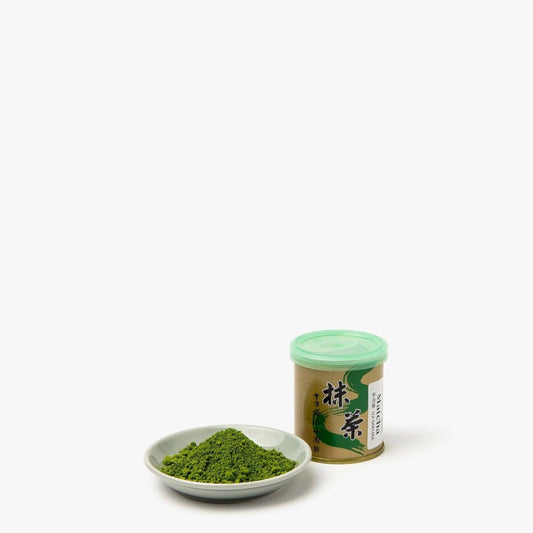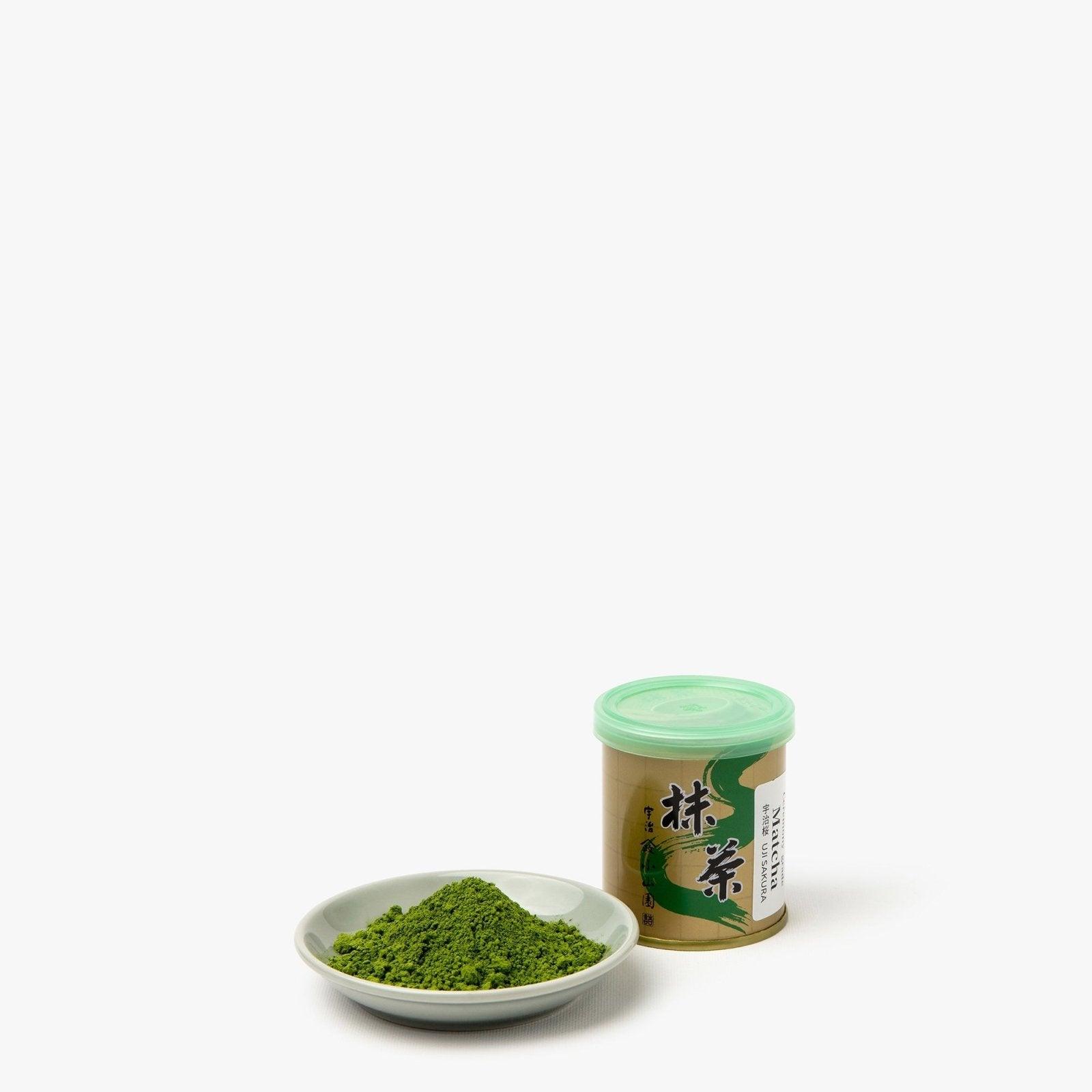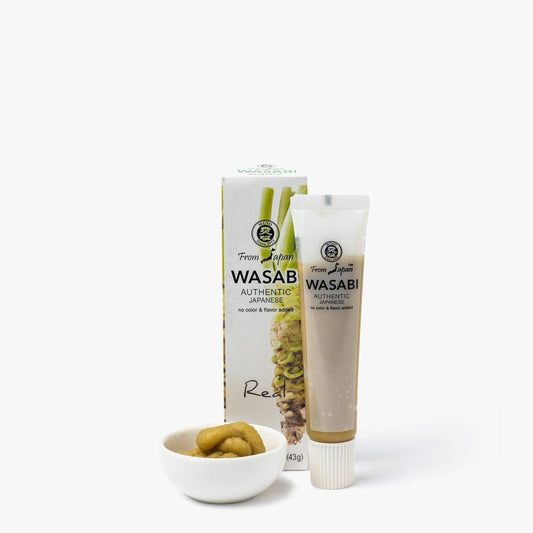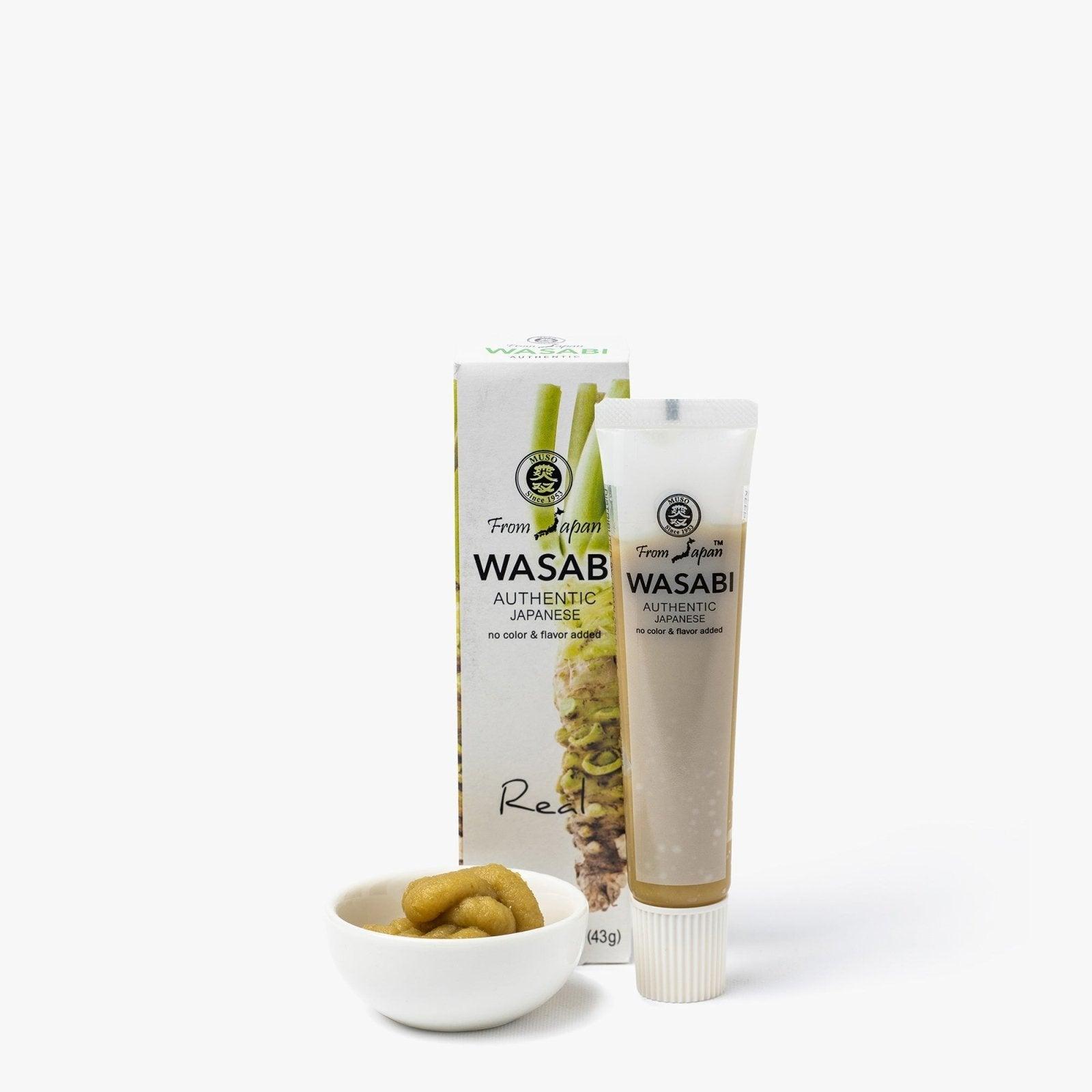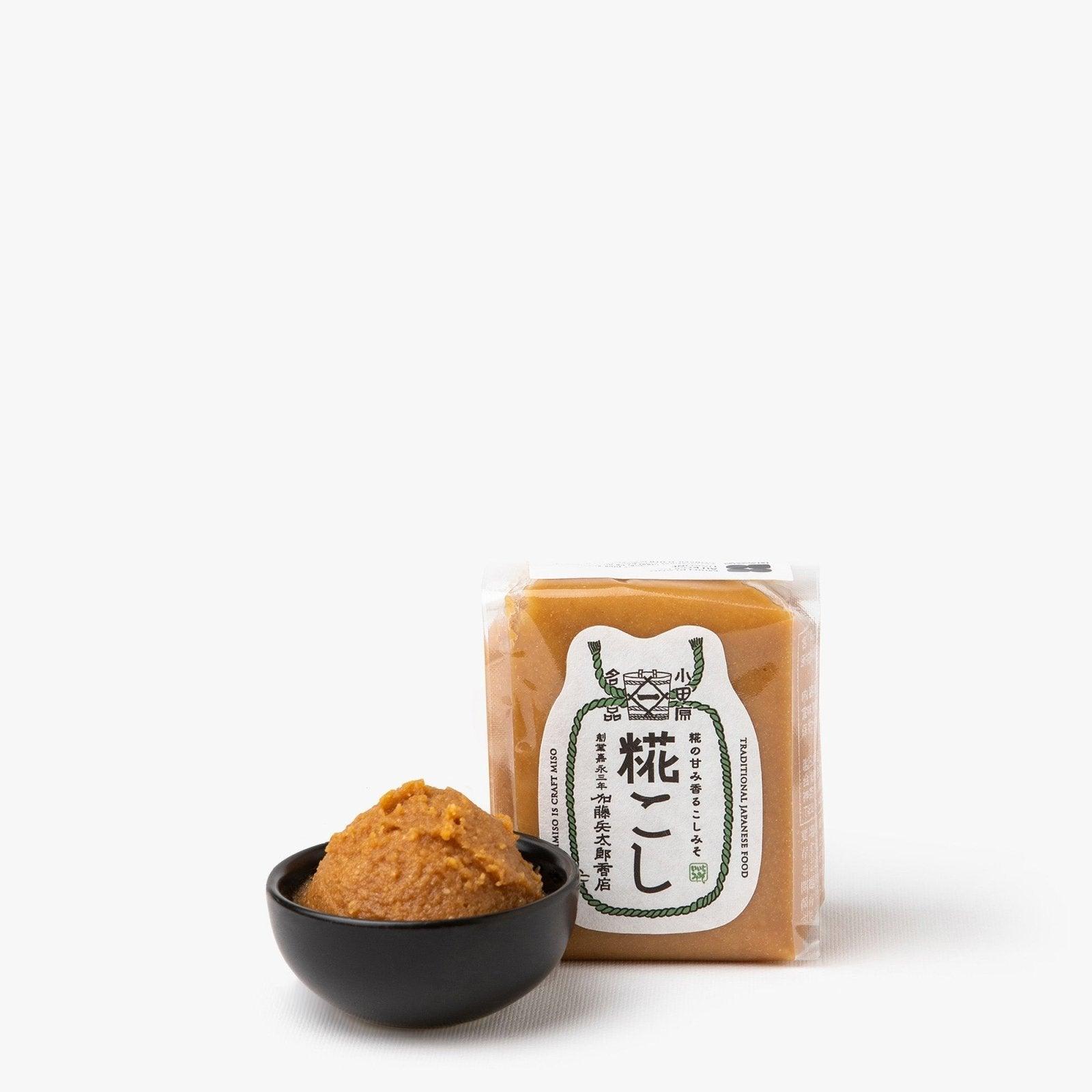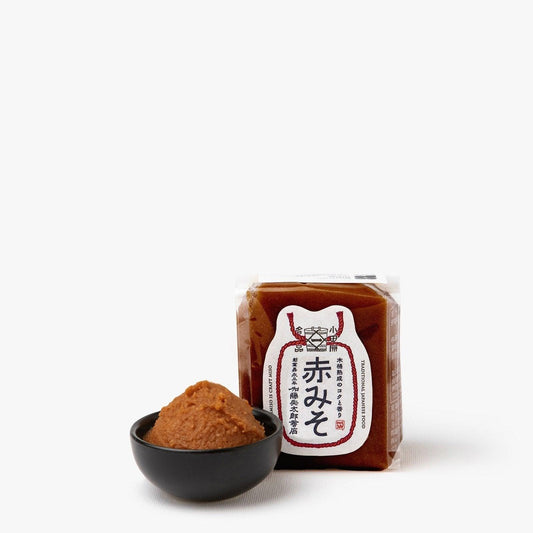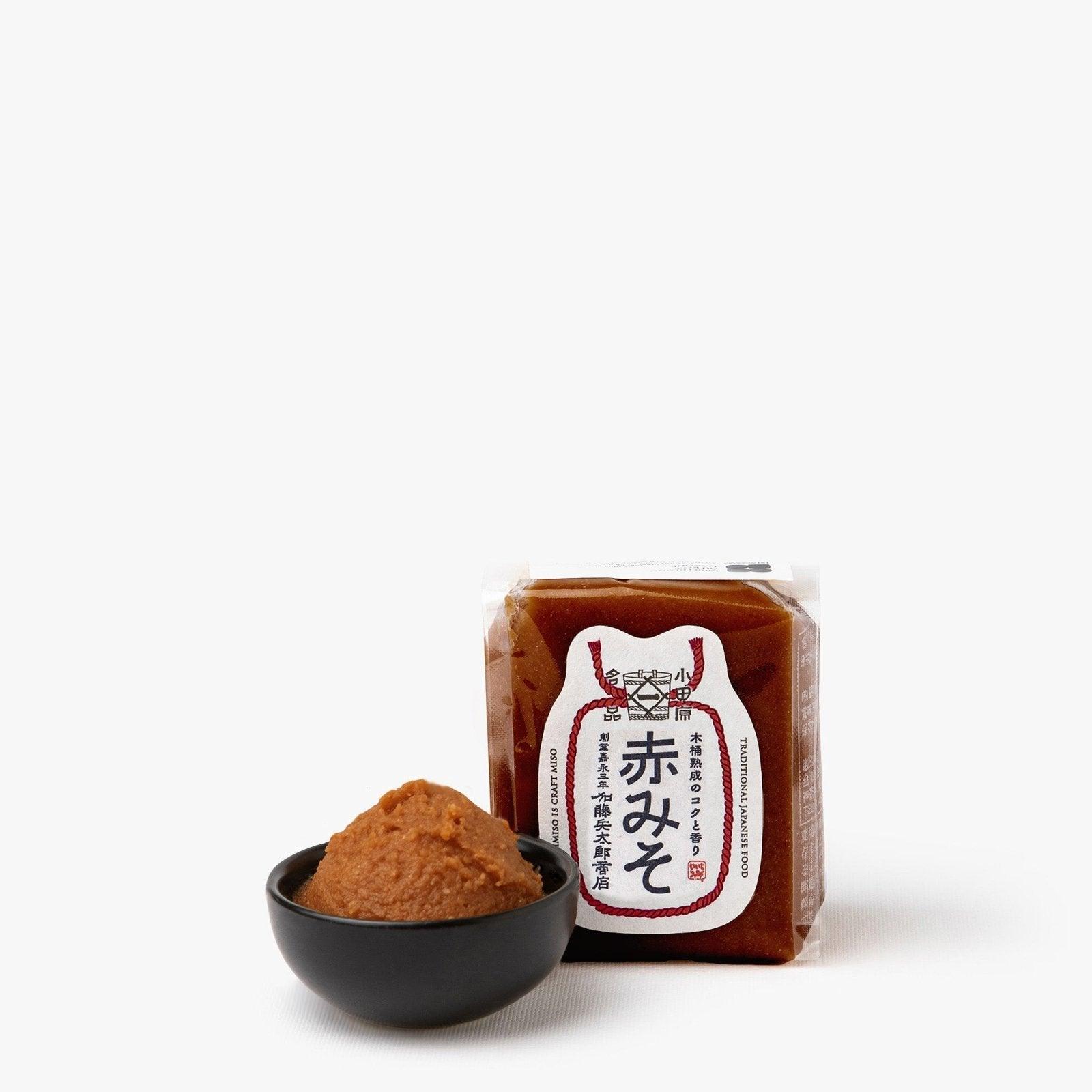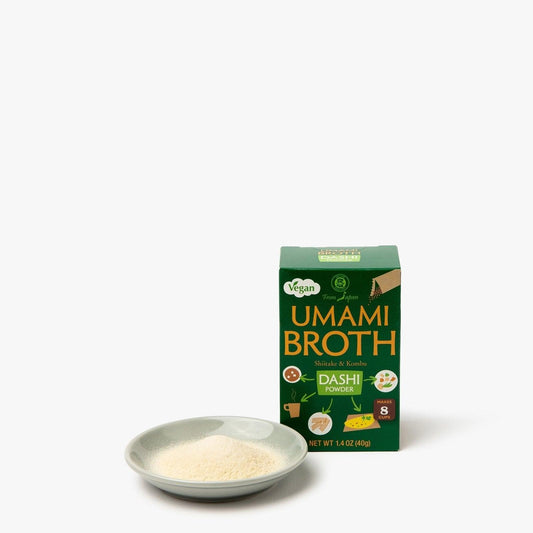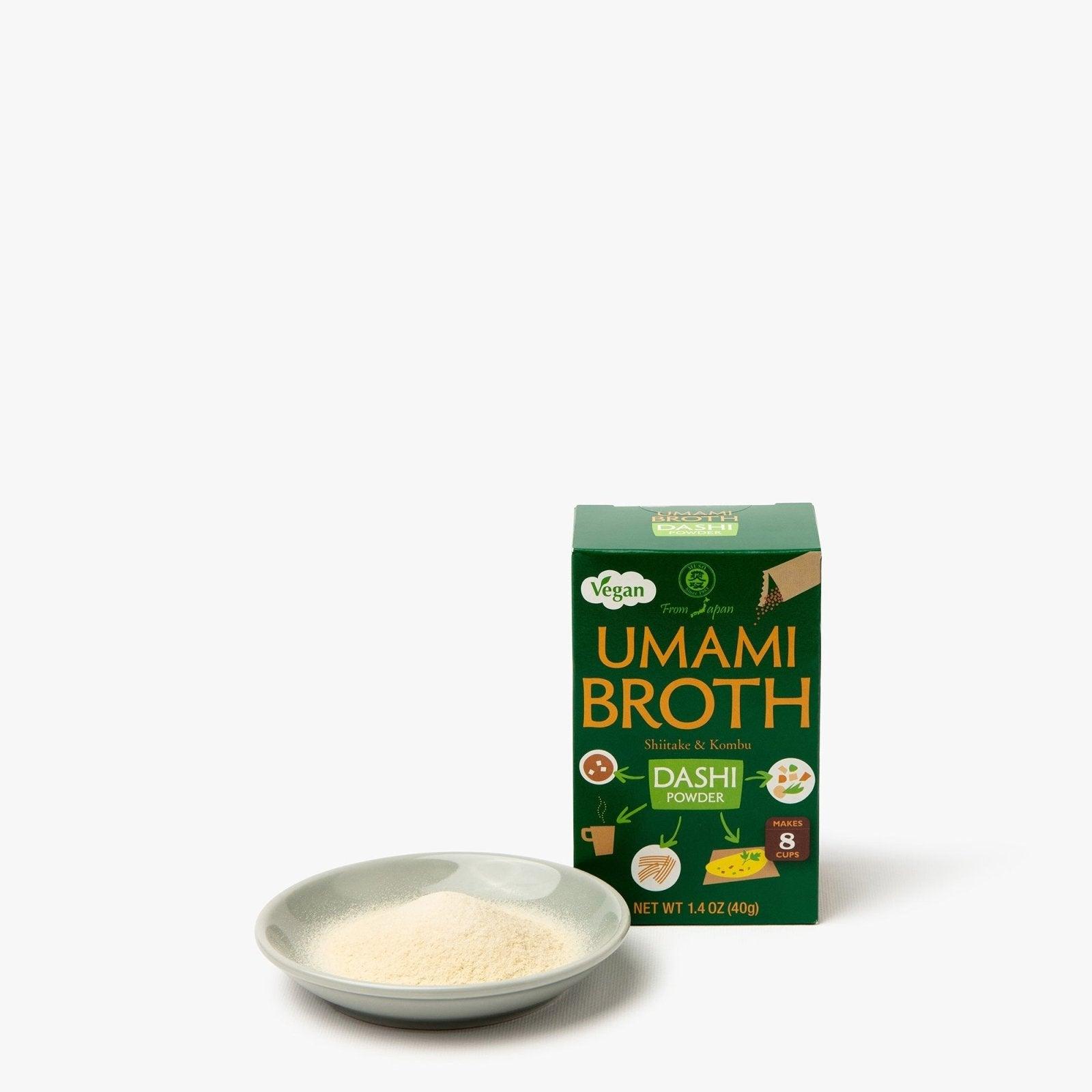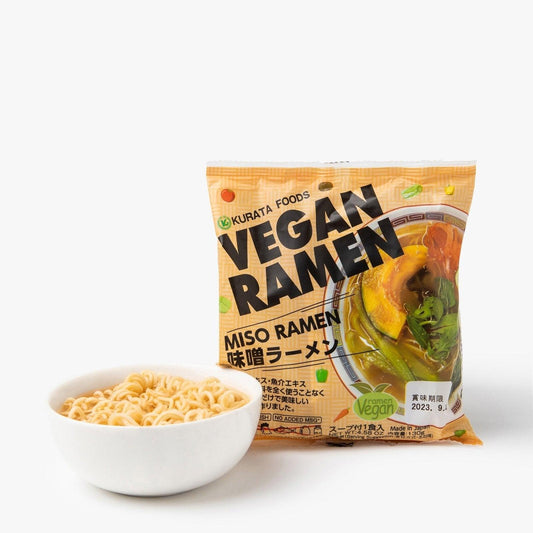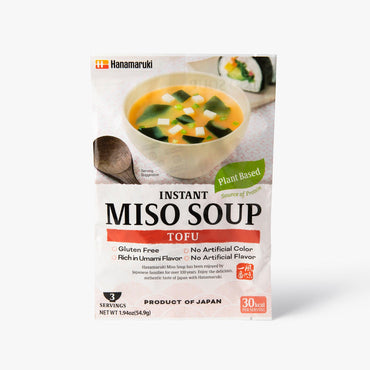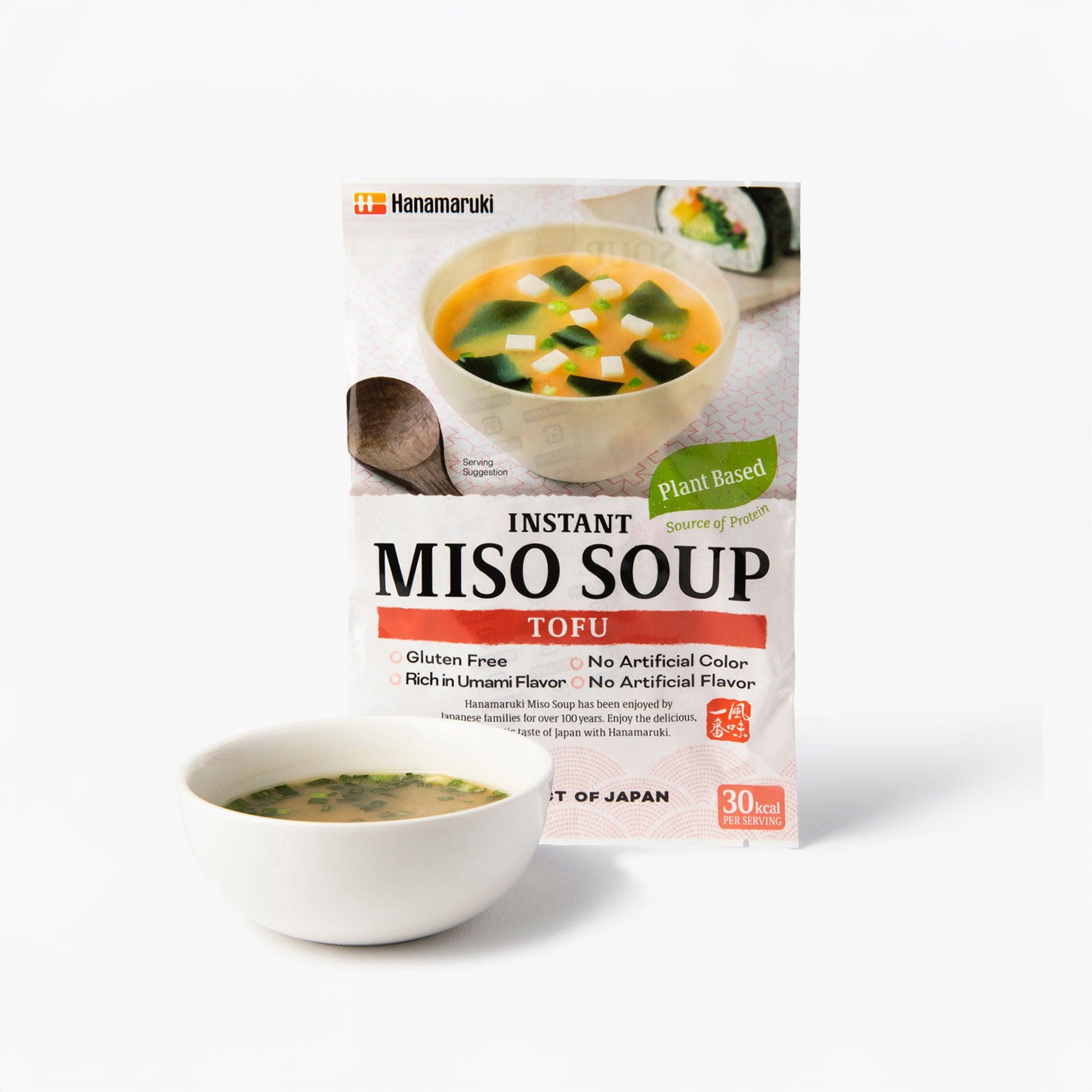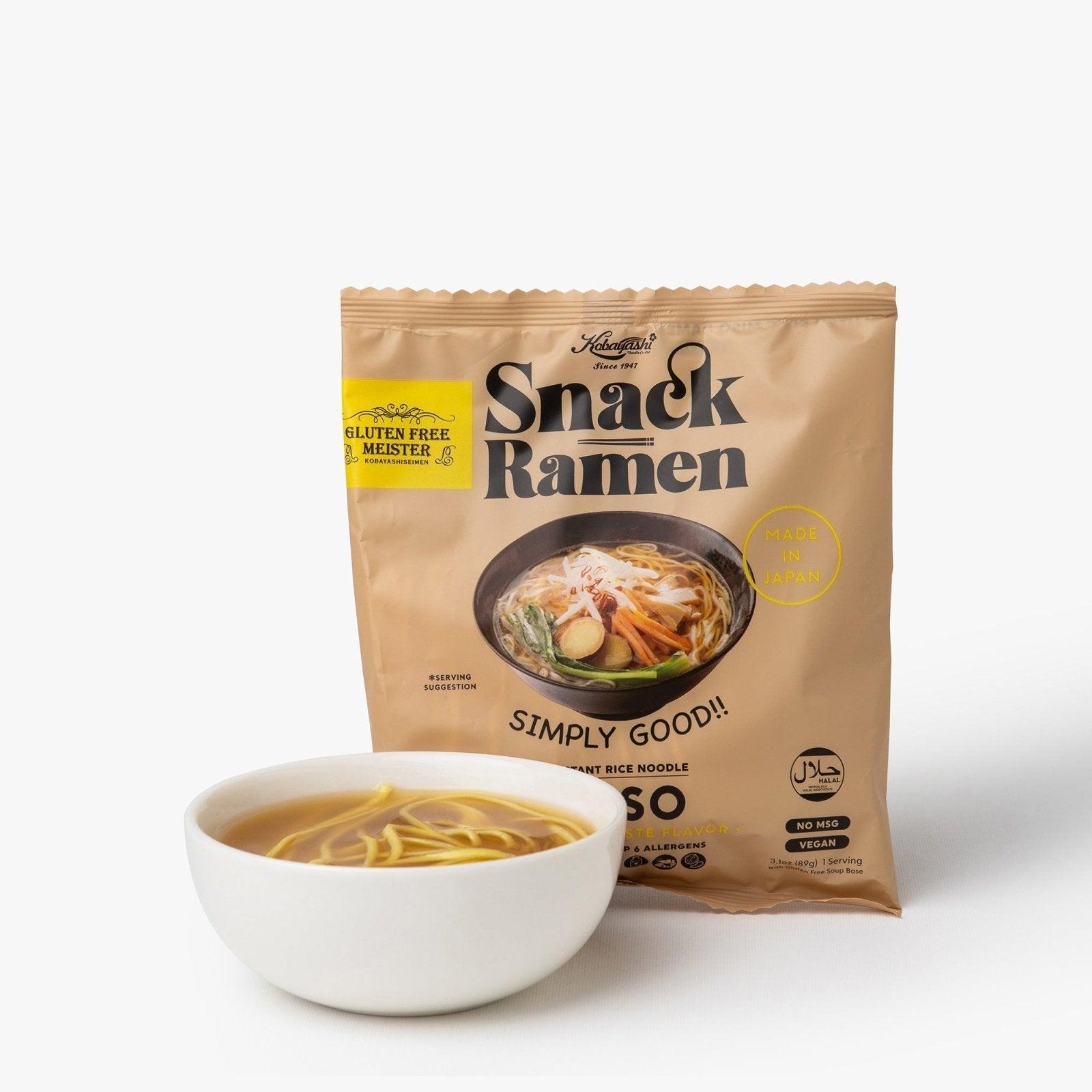Cook Japanese with our latest recipes
Find out more about Japanese grocery products
What are the basic ingredients of Japanese cuisine?
The basic ingredients of Japanese cuisine include :
- Rice (gohan): The centerpiece of most Japanese meals.
- Soya: Used in the form of soy sauce, misoor tofu.
- Seaweed (nori, kombu, wakame): Essential in soups and sushi.
- Dashi A basic broth made from kombu (seaweed) and dried bonito.
- Mirin A sweet rice wine used for cooking.
- Rice vinegar Indispensable for seasoning sushi rice and marinades.
- Wasabi A spicy condiment, often served with sushi.
What's the difference between mirin and cooking sake?
The mirin and cooking sake are both used for cooking, but differ mainly in their sugar and alcohol content. Mirin is a mild, sweet, low-alcohol rice wine used to add sweetness and brightness to dishes. Cooking sake is drier, with a higher alcohol content, and is used to deglaze dishes and neutralize fish or meat odors.
What are the most common types of Japanese noodle?
The most common types of Japanese noodles are :
How do I use dashi in my recipes?
The dashi is a basic broth in Japanese cuisine, used to prepare soups such as miso soup, sauces and simmered dishes. It can also be used to cook vegetables, as inoden, or as a base for noodle dishes. To use it, simply dilute dashi (whether granulated, liquid or homemade) with water, then stir it into your recipes.
What's the difference between white and red miso?
White miso (shiro miso) and red miso (aka miso ) differ in color, taste and fermentation time:
- White miso Mellower, slightly sweet, with shorter fermentation, often used for light dishes such as soups.
- Red miso Stronger-tasting, saltier and with longer fermentation, used in more robust dishes such as rich miso soups or marinades.
How to choose the right type of rice vinegar?
To choose the right rice vinegar, take into account :
- White rice vinegar: Mild and versatile, ideal for sushi, marinades and vinaigrettes.
- Seasoned rice vinegar: Already sweetened and salted, ready to use for sushi rice.
- Brown rice vinegar: More intense in flavor, often used for richer dishes or more complex marinades.
What are the typical sushi accompaniments?
Typical sushi accompaniments include:
- Wasabi: Pungent paste made from wasabi root, added directly to the sushi or mixed with soy sauce.
- Pickled ginger (gari): Thin slices of pickled ginger, eaten between bites to refresh the palate.
- Soy sauce: Used to lightly soak sushi before eating.
- Shiso: Perilla leaf, sometimes served with sushi to add a herbaceous note.
What are the basics of Japanese cuisine?
The basics of Japanese cuisine are based on the use of fresh ingredients and essential seasonings such as soy sauce, miso, mirin, rice vinegar and dashi. Food is often cooked simply, highlighting the purity and natural flavor of the ingredients. Common techniques include steaming, grilling, light frying (tempura), and the preparation of raw dishes such as sushi and sashimi.
How to prepare a balanced bento?
A balanced bento includes :
- Protein: Fish, meat, tofu or egg.
- Rice: The main ingredient, often accompanied by sesame seeds or furikake (rice seasoning).
- Vegetables: Raw, pickled (tsukemono), or cooked (e.g. broccoli, carrots).
- Fruit: Chunks of fresh fruit to finish the meal.
- Accompaniments: Like tamagoyaki (Japanese omelette), rice dumplings (onigiri) or small salads.
What are the benefits of Japanese cuisine?
Japanese gastronomy is renowned for its many health benefits, thanks to its fresh ingredients, healthy cooking techniques and balanced nutrition. The Japanese have one of the highest life expectancies in the world, and many factors contribute to this remarkable longevity, including their eating habits!
They have traditionally followed a balanced diet rich in vegetables, fish, seaweed, tofu and cereals, especially rice. Their diet is low in saturated fats and processed foods. Their diet is not too high in calories, yet packed with essential nutrients and antioxidants, which help fight oxidative stress, aid digestion and prevent cell aging.
The Japanese have a high consumption of oily fish, which is an excellent source of omega-3, beneficial to heart and brain health.
The basis of many Japanese dishes is rice, which is a healthy source of energy, low in saturated fats and rich in complex carbohydrates.
Japanese plates are often garnished with fresh vegetables, rich in vitamins, minerals and dietary fiber, which promote digestive health and vitality. Seaweeds such as nori, kombu and wakame are rich in nutrients including iodine, vitamins and essential minerals.
Soy-based products such as tofu, miso and tempeh are also an excellent source of vegetable protein, fiber and antioxidants.
In addition, the Japanese consume fermented foods such as miso and nattō on a daily basis, which are beneficial for digestive health thanks to the probiotics they contain.
Japanese cooking techniques also play their part! For example, grilling (yakitori) and steaming (nimono) preserve the flavor and nutritional value of food.
It should be noted that Japanese cuisine varies according to regional and individual preferences, so specific health benefits may vary according to personal dietary choices. However, in general, Japanese gastronomy is seen and recognized for its contribution to a healthy, balanced and nutritious diet.
What is umami?
Umami is one of the five basic flavors that the human taste buds can detect, alongside sweet, salty, sour and bitter. The term "umami" is of Japanese origin and translates roughly as "tasty" or "delicious". This flavor has a distinct gustatory quality and is often described as a sensation of "rich", "deep" or "savory" in the mouth.
Umami is generally associated with foods rich in glutamic acid, an amino acid that acts as a neurotransmitter in the human brain. Foods rich in umami include:
Monosodium glutamate (MSG): A food additive commonly used to enhance the umami flavor of many dishes.
Soy-based products: such as miso, soy sauce and tofu, which are rich in natural glutamic acid.
Fermented foods: such as Parmesan cheese, Roquefort, kimchi, and fermentation products like Worcestershire sauce.
Slow-cooked meats: Like roast beef, pulled pork and other slow-cooked dishes that develop umami flavors over time.
Mushrooms: Like shiitake and porcini mushrooms, which naturally contain glutamic acid.
Tomatoes: Especially ripe tomatoes, which are rich in glutamic acid and seen as a mainstay of umami flavor in Italian cuisine, for example.
Umami has a unique ability to enhance and balance flavors in dishes, particularly by adding depth and complexity to culinary preparations. It is often used in combination with other basic flavors to create deliciously balanced dishes. It was recognized as a distinct flavor during the 20th century and is now widely accepted around the world as an essential element of the human taste palette.
























